Sweet potato toast! Made in my toaster?
What a fabulous idea! I’ve baked them, roasted them, and used them in all sorts of recipes but I’ve never sliced them for making toast. Hmmmm, now I’m really intrigued because this idea appears to be brilliant on so many levels.
At a family gathering the other night, I asked everyone if they had heard about the new food trend of replacing bread with fresh sweet potato slices and making toast out of them? They all said “no, but that it sounds really good.”
During our discussion, my mom raised a great question as to whether or not she would really be able to slice them for toasting because, at times, she finds it difficult to cut them up for other recipes.
Additionally, we all wondered how long it would really take to actually toast the sweet potato slices because it typically takes quite a long time for any of us to bake and/or roast them at home.
My family had two very valid questions, so off to the web and kitchen I went to experiment! After looking at a few online recipes and serving ideas, I found a consistent recommendation to use sweet potato slices measuring approximately a ¼ inch but I did not find many recipes that stated how long it actually takes to toast them.
The slide show below provides the specifics of my experiment. If you are reading this in the emailed newsletter format, the slideshow may not appear. Simply click into my website blog to view it, thanks.
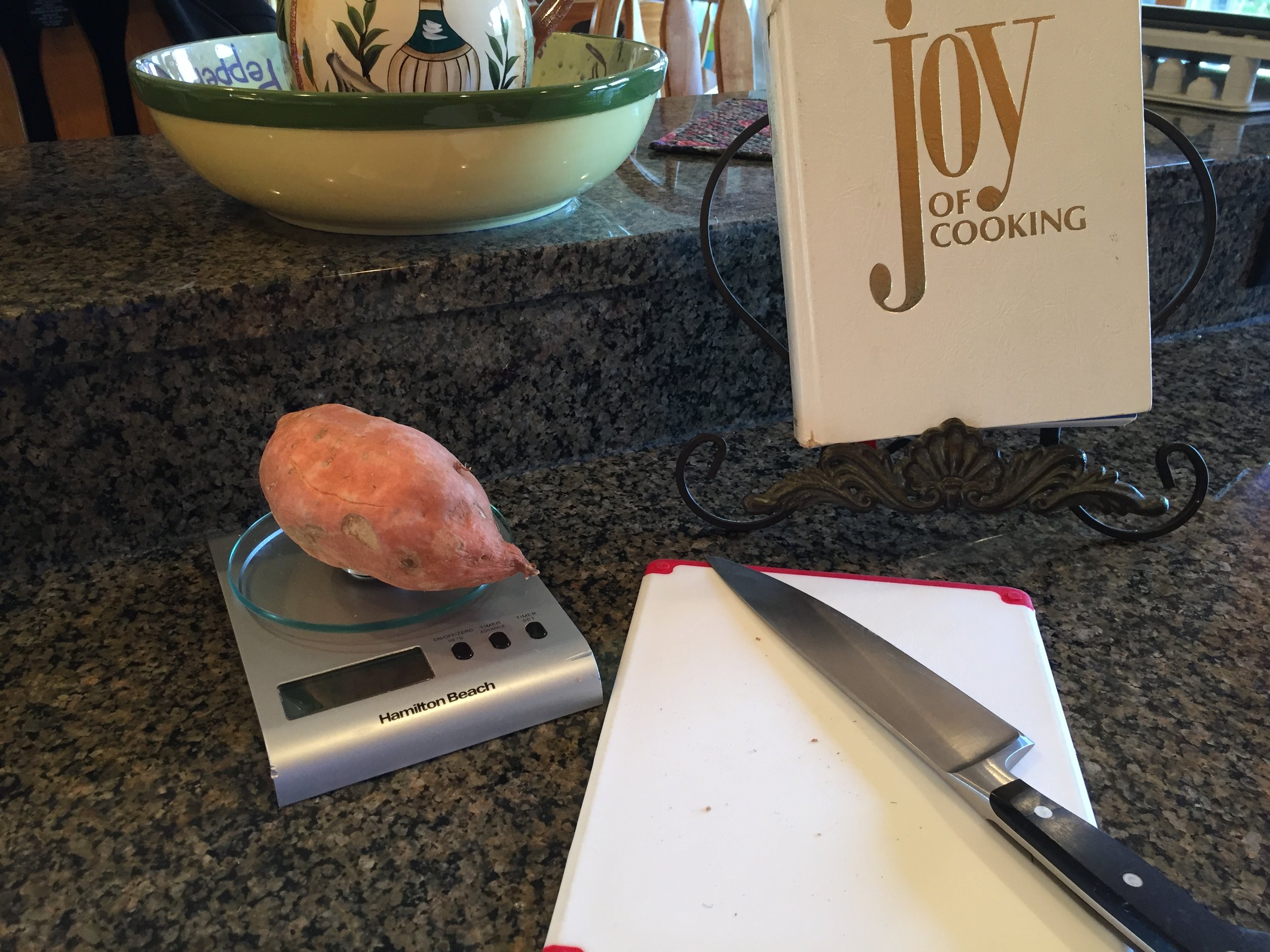
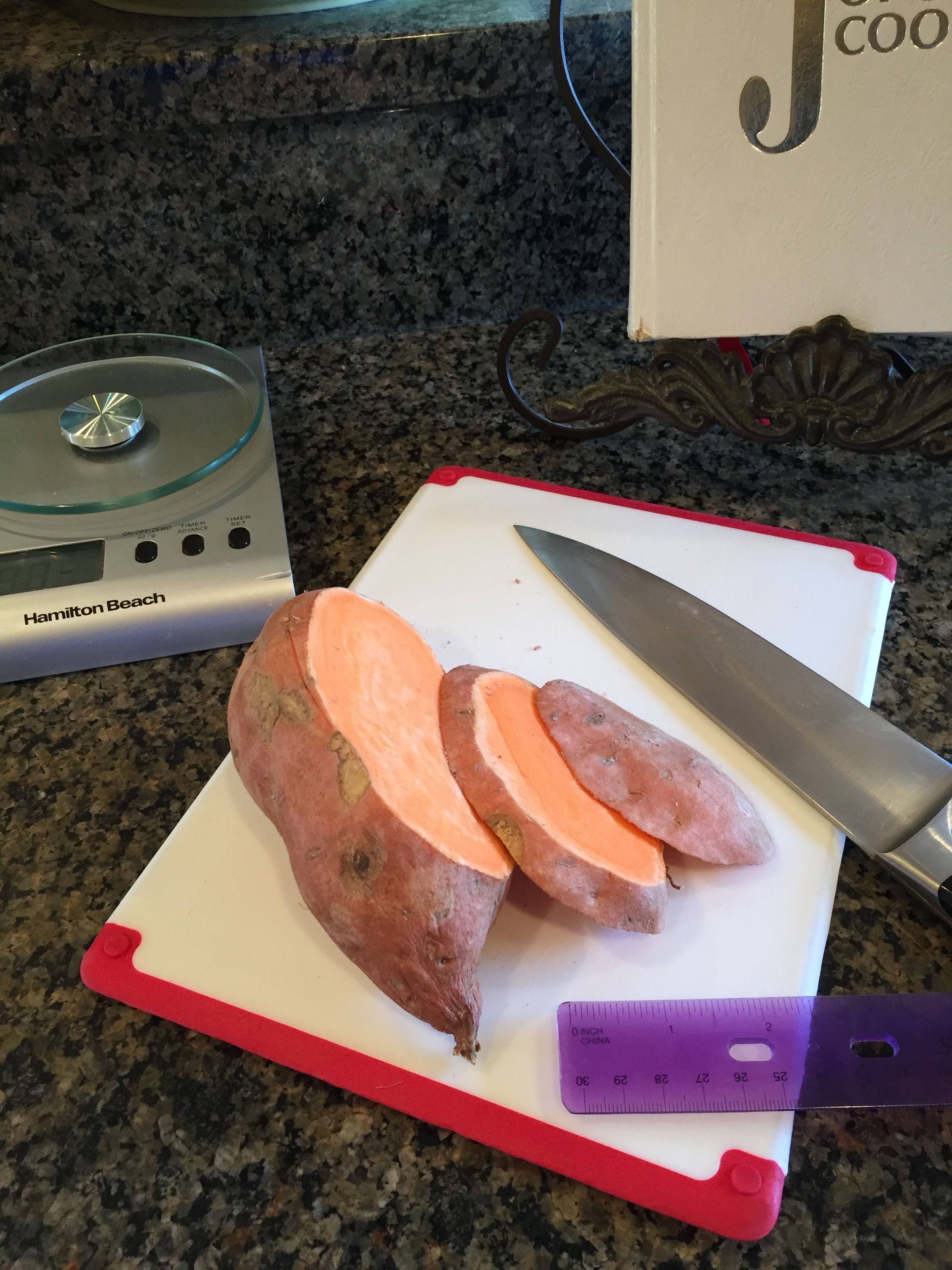
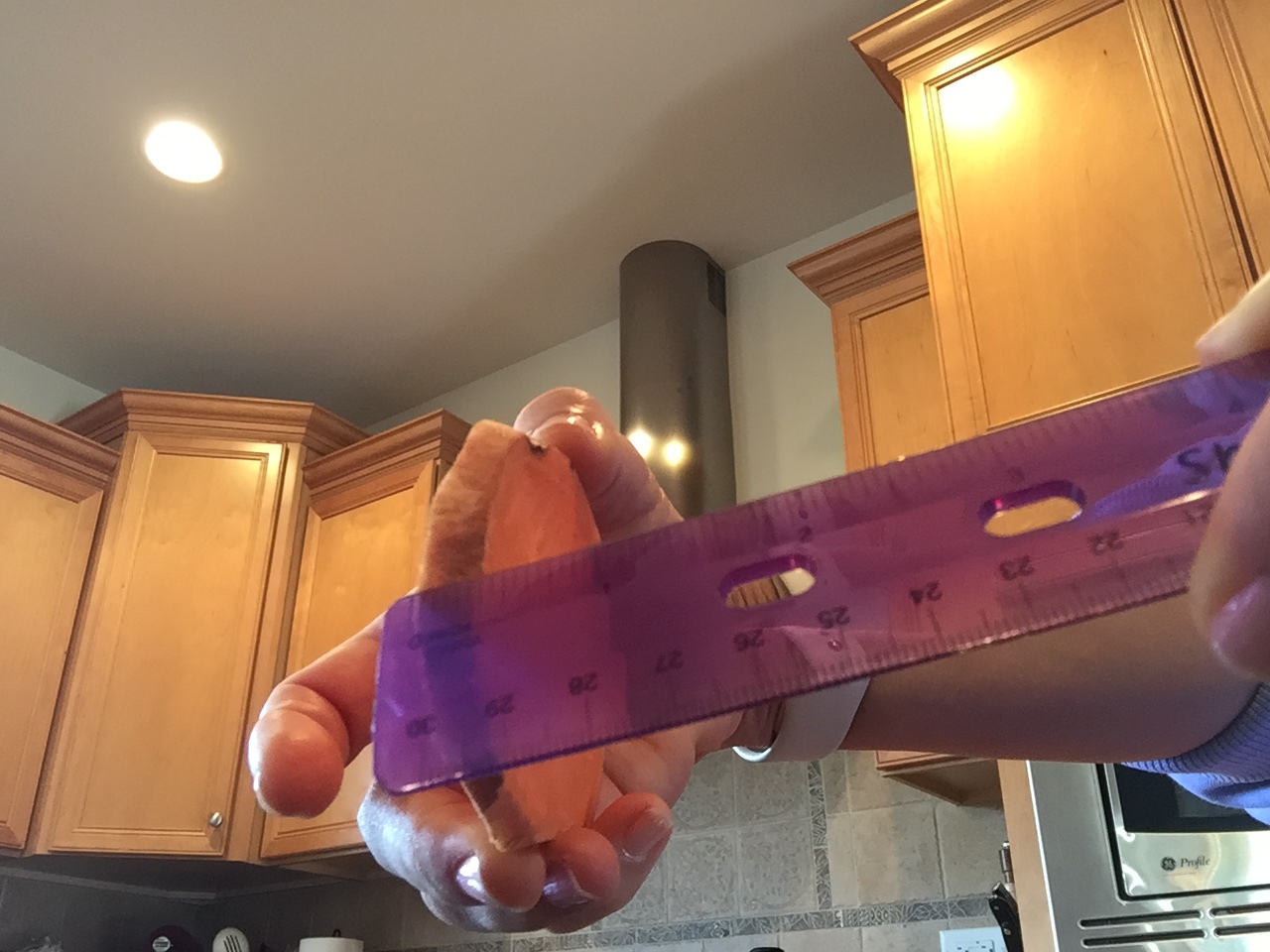
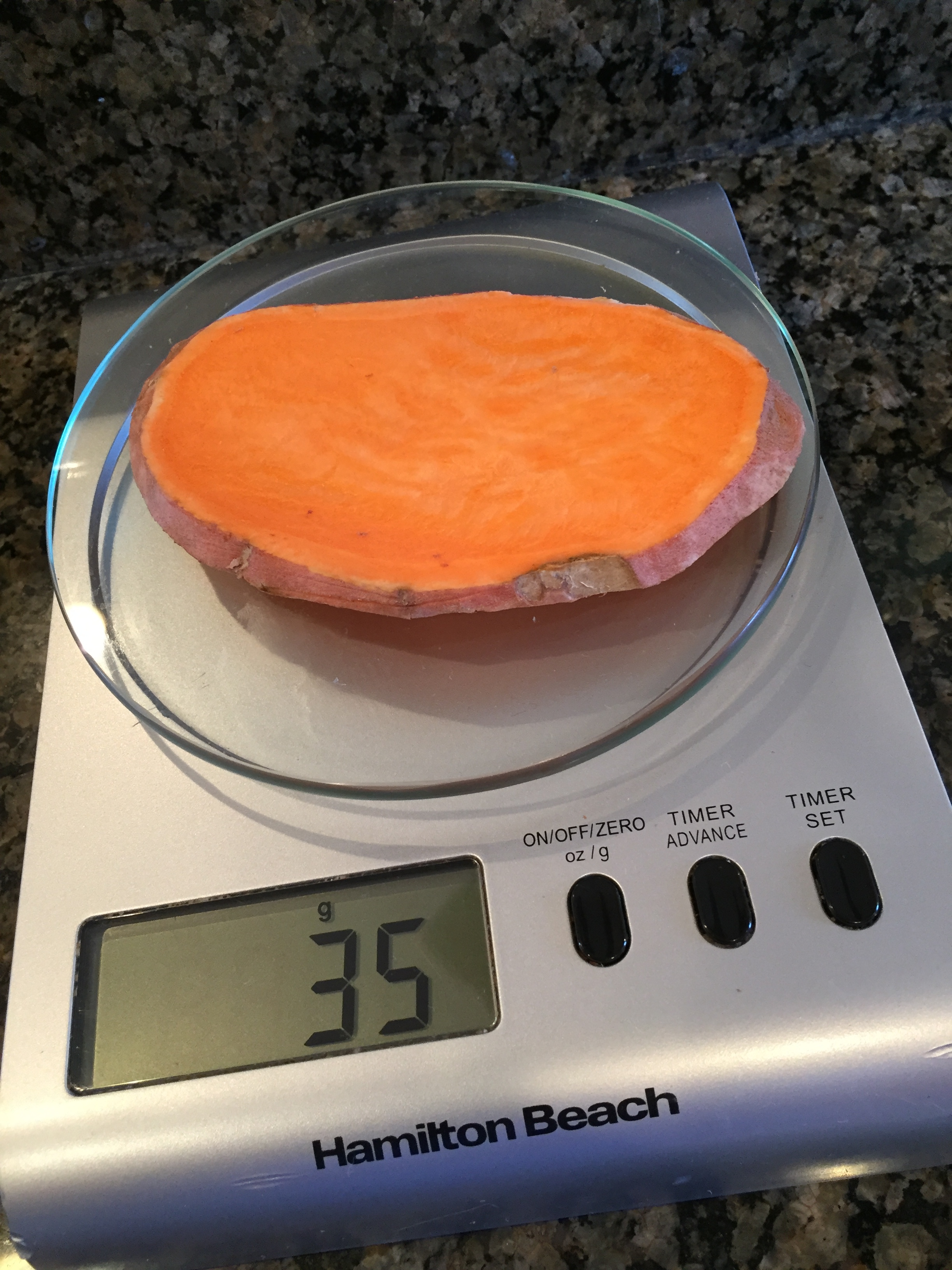
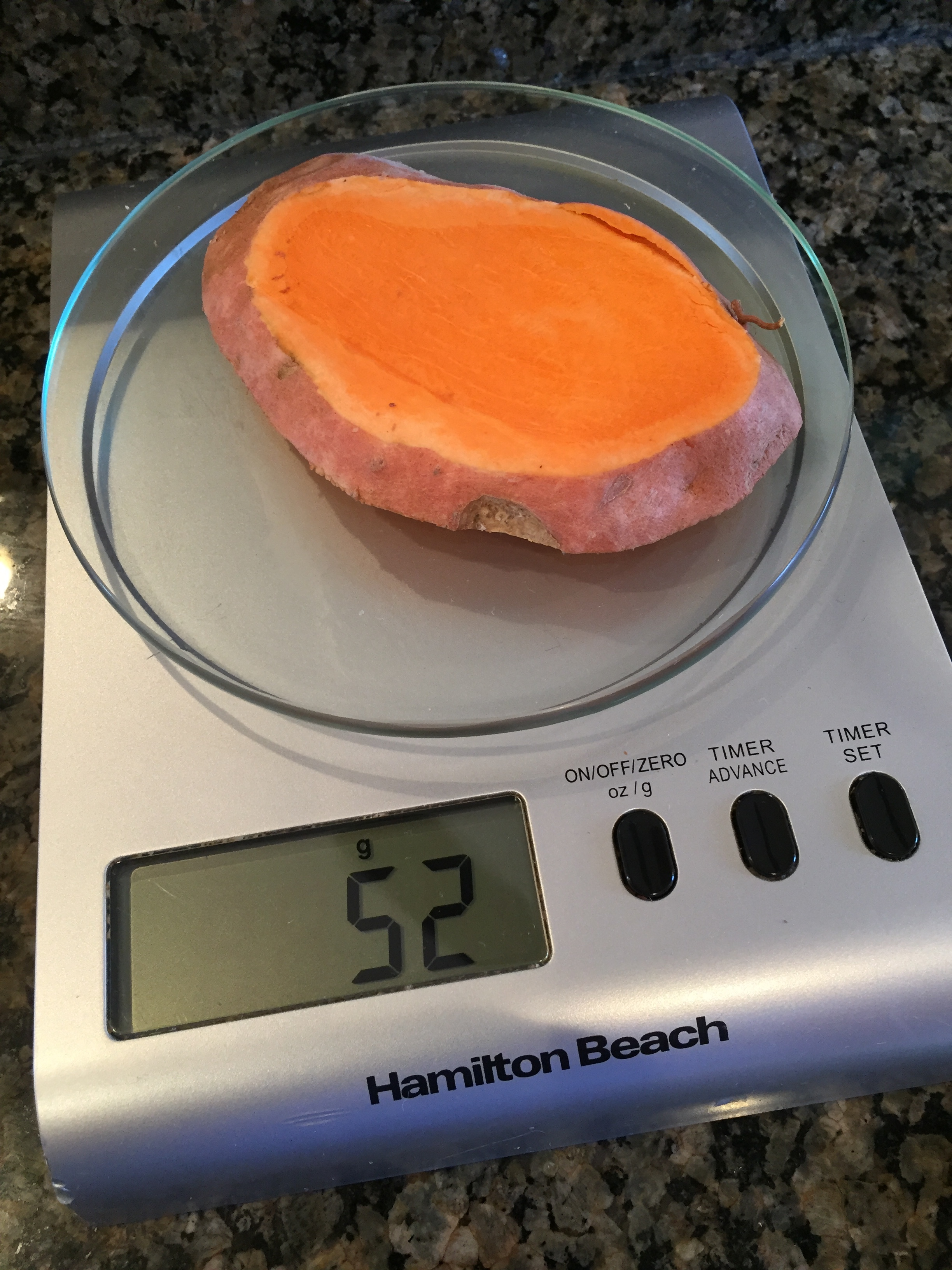
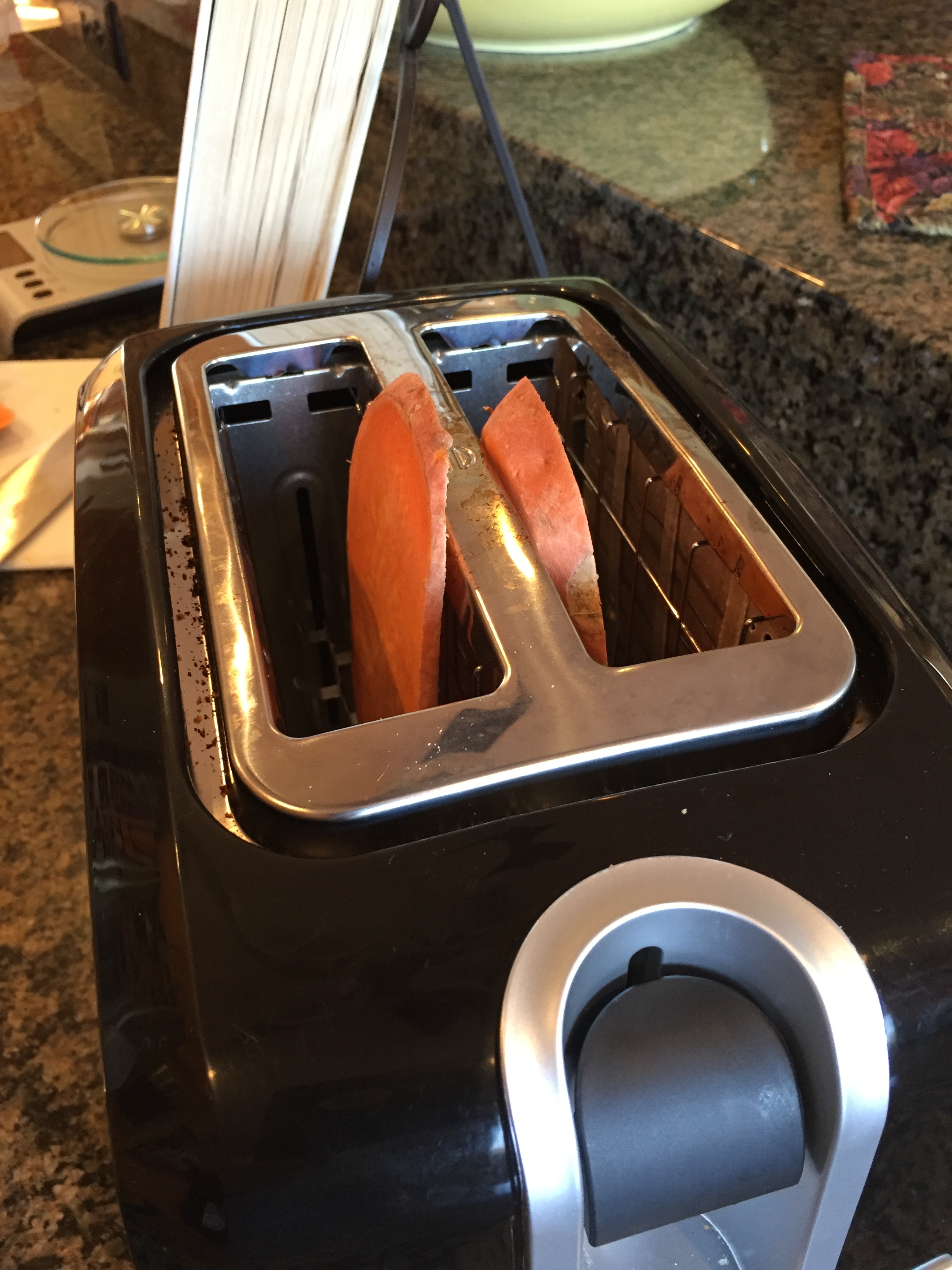
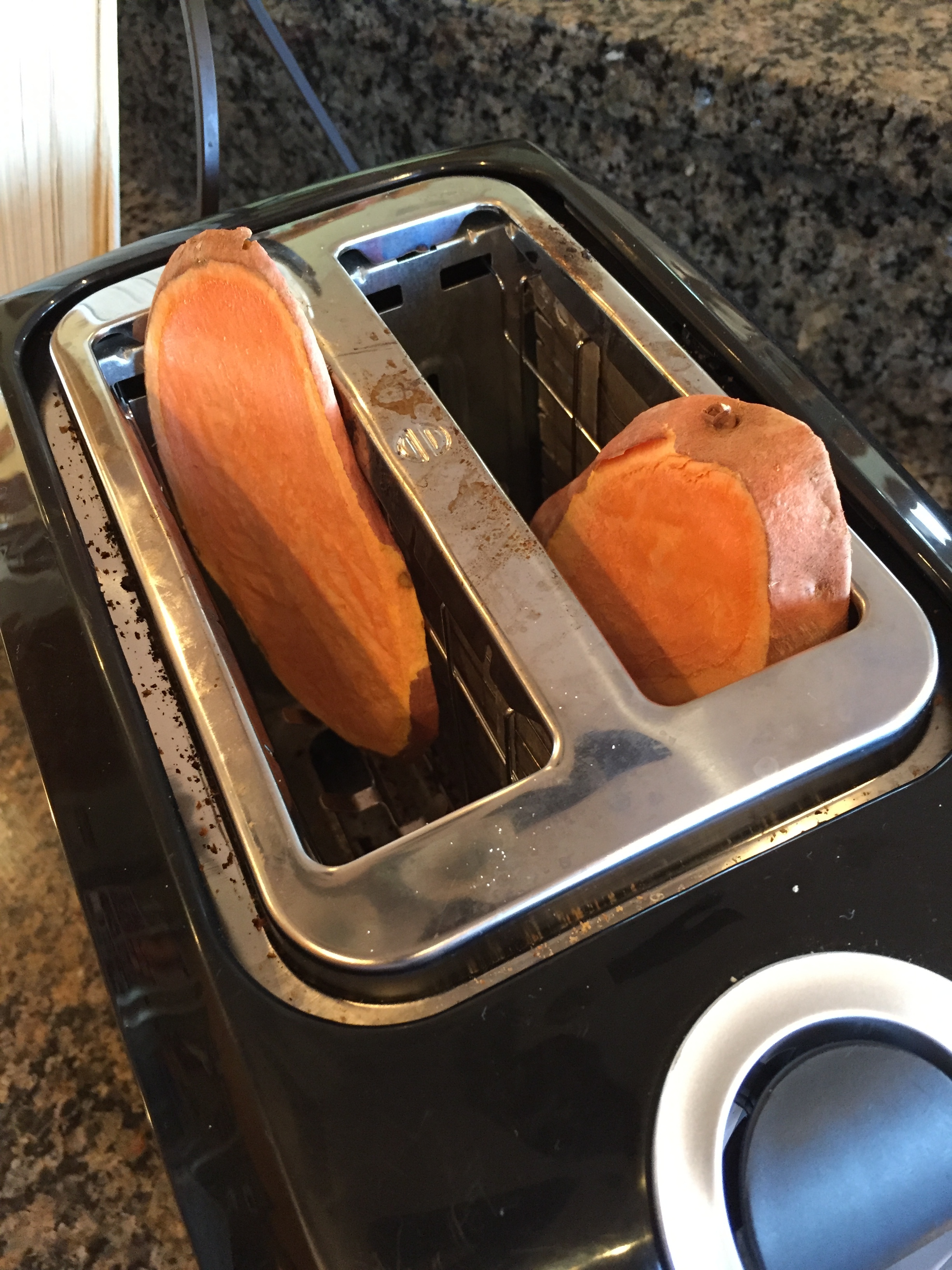
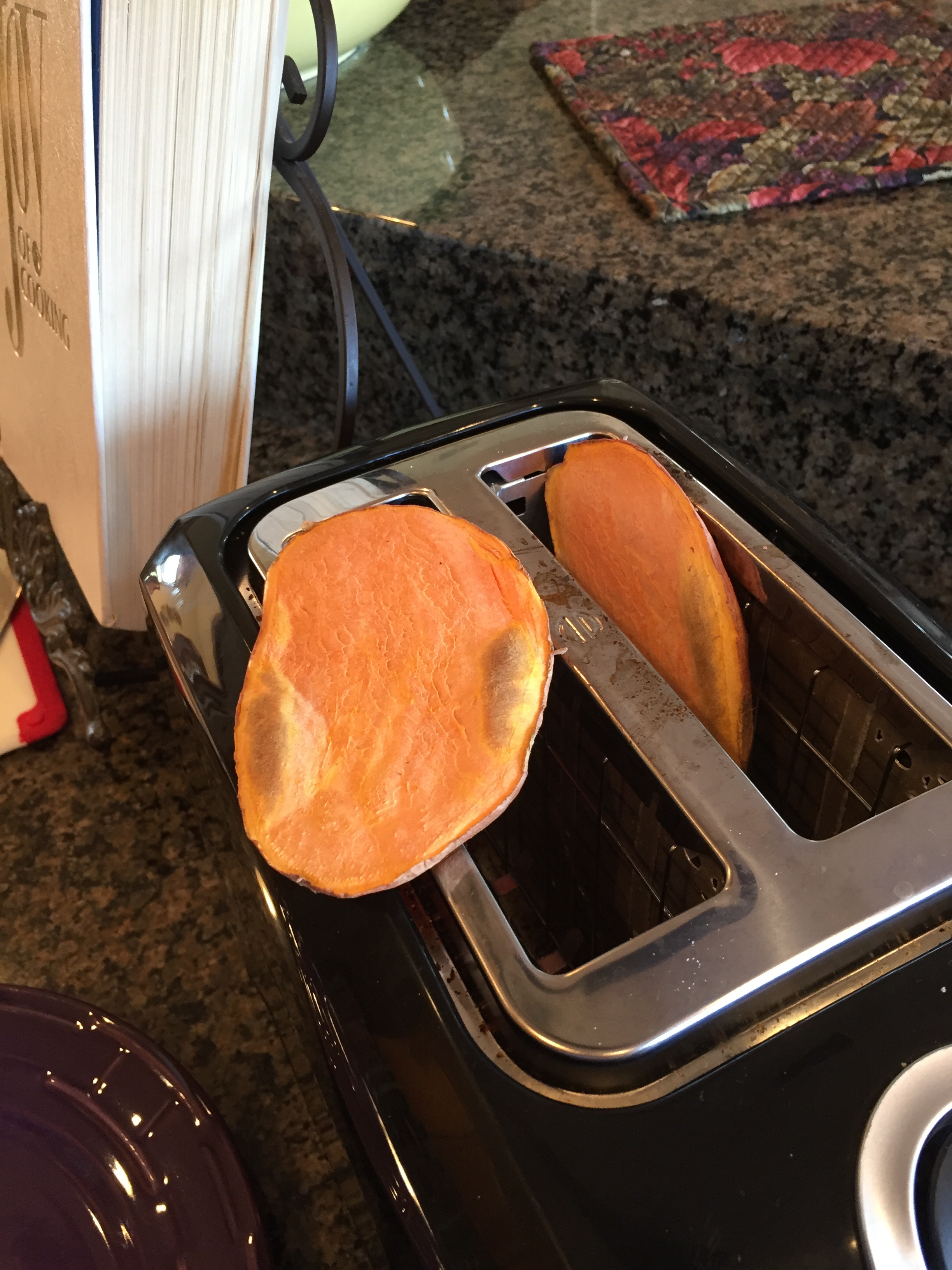
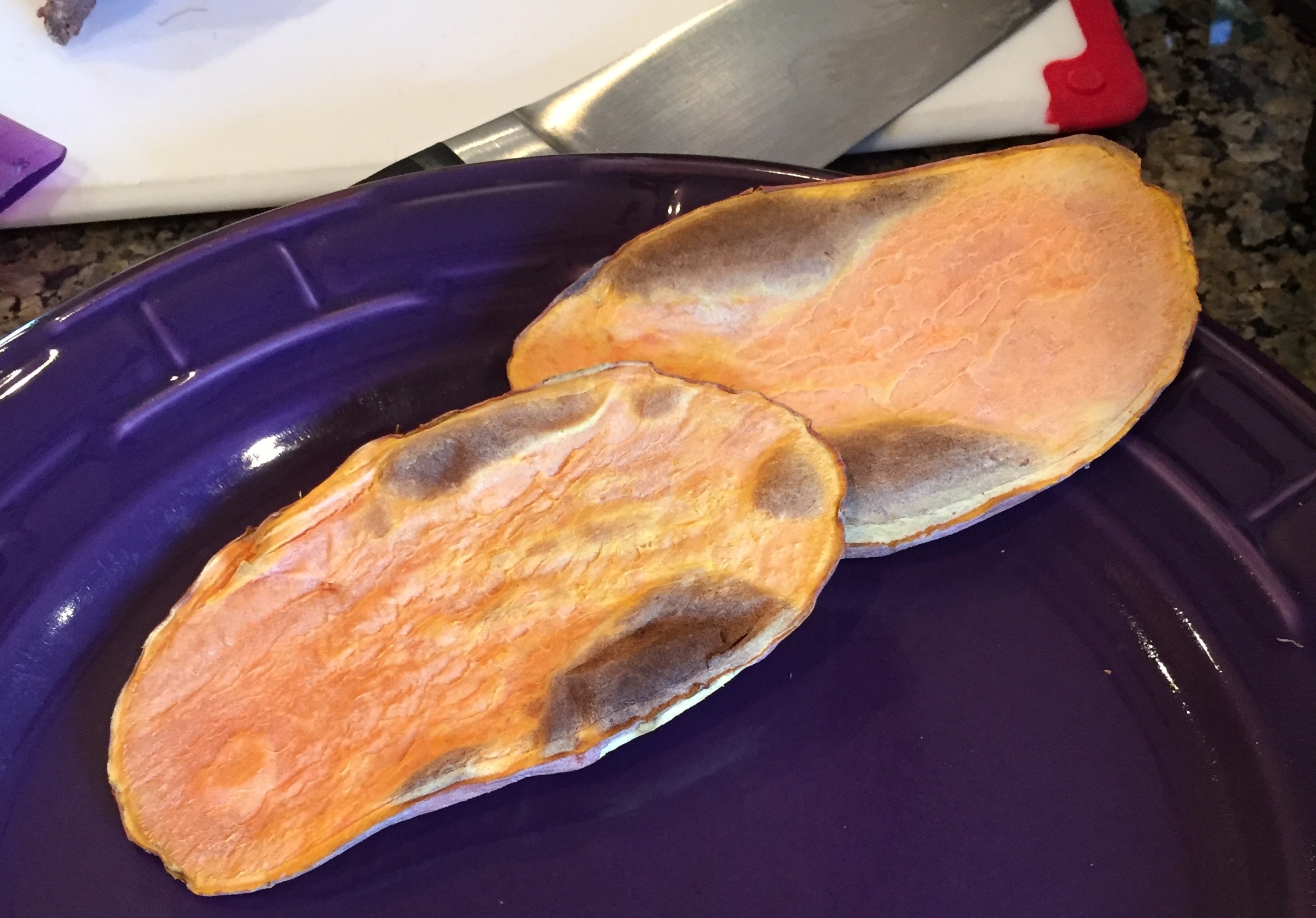
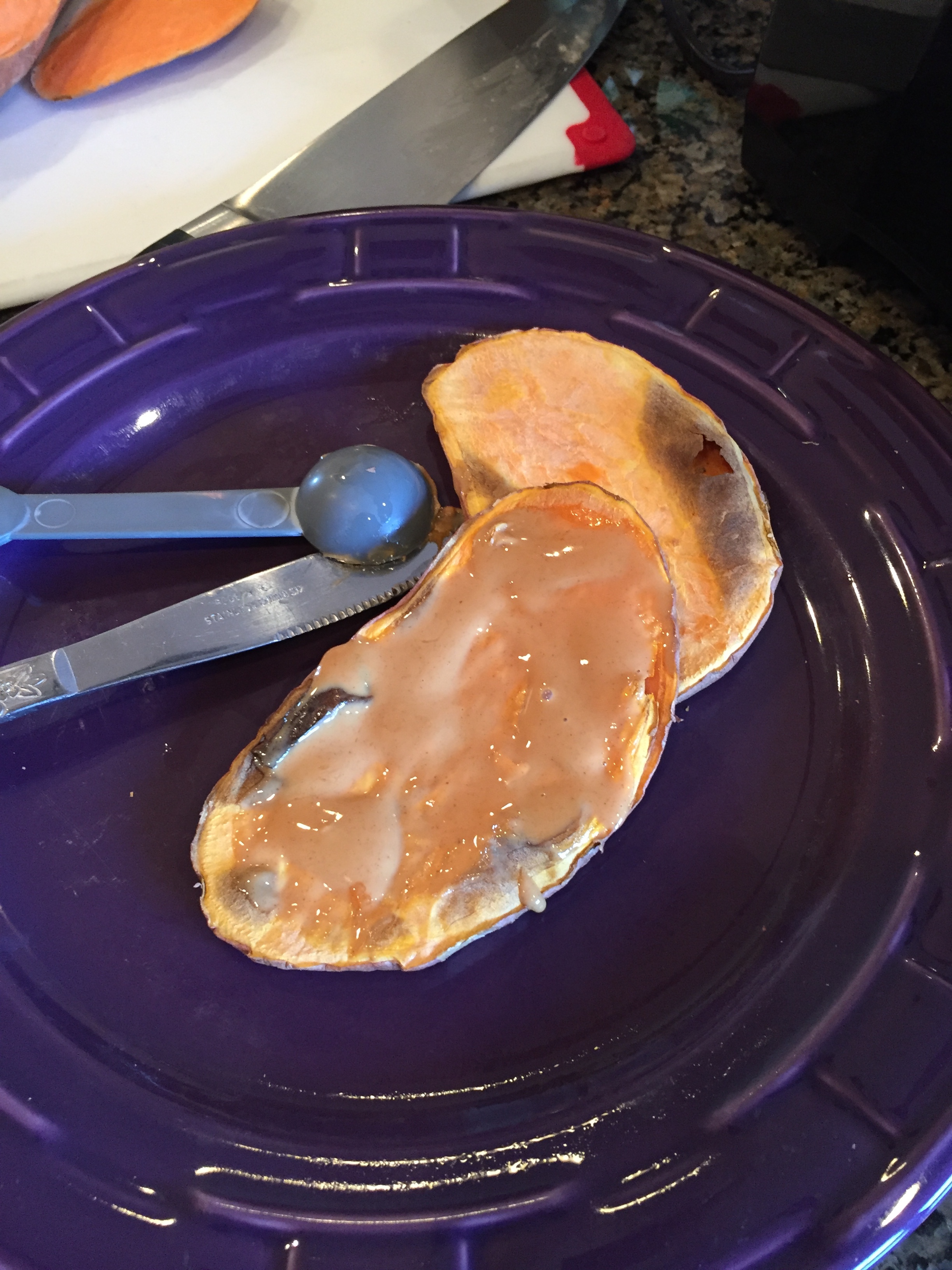
Slicing the sweet potato was not too difficult but the potato was very fresh and my knife was sharpened just prior to using it. As sweet potatoes age they can dry out, which really makes them difficult to cut and not as tasty.
As you can see, it took a total of 9 minutes, not exactly a quick fix, to toast the slices with my toaster set on 5 of 6 for darkness choice. The ¼ inch piece was toasted to a level of still being pliable and not rigid but the ½ inch piece was still very uncooked inside, so I did not eat that piece.
The toasted ¼ inch piece provided an interesting chewy texture and earthy taste compared to toast but not any real crunch factor, which I missed. I think coupling it with the right foods such as eggs Benedict or hummus, as recommended online, would be a really nice change from the usual English muffin and pita bread.
The down and dirty of it is that there is no reason to stop eating whole grain, multi-grain, or many other types of healthy (healthy being the operative word) complex carbohydrate bread products. However, whenever you fancy it and have the time to make it, it certainly would be a nice and nutritionally beneficial change to have sweet potato toast in place of bread.
What are the nutritional benefits of replacing regular toast with sweet potato toast?
The answer completely depends on what type of product you’re swapping it out for. For comparison, see the nutritional information below for two different types of bread (not chosen for any specific brand or reason) and sweet potato baked with the skin on it, without salt.
Reliable nutrition information for baked/toasted slices of sweet potato with the skin on it was not available, so baked seemed to be the best for comparison. Eating sweet potato slices with skin on it will definitely add fiber and other nutrients to the values, so keep that in mind. Additionally, sweet potato has many more micro and macronutrients in it than either of the breads has, so I only listed values that could be compared for this exercise.
It's important to note that the 1/4 inch slice I used for my experiment actually weighed 35 grams, which is more than the serving size listed in the comparison. More than likely your serving size for two pieces or one bigger piece will provide you with a lot more nutrition than the one serving below as well as the added skin!
Sources for comparison: USDA National Nutrient Database and SELF NutritionData
1 ounce or 28 g sweet potato, baked in skin, no salt
- Calories: 25
- Fat: 0.50 g
- Cholesterol: 0
- Sodium: 10 mg
- Total Carb: 6 g / 2% DV
- Dietary Fiber: 1 g / 4% DV
- Sugars: 2 g
- Protein: 1 g
- Vitamin A: 108% DV
- Calcium: 1% DV
- Iron: 1% DV
- Vitamin C: 9% DV
- Vitamin B6: 4% DV
- Potassium: 4% DV
- Manganese: 7 % DV
1 slice (26g) Sara Lee Classic White Bread (Enriched – vitamins and minerals added)
- Calories: 70
- Fat: 1 g
- Cholesterol: 0
- Sodium: 125 mg
- Total Carb: 13 g / 4% DV
- Dietary Fiber: 0 g / 4% DV
- Sugars: 1 g
- Protein: 2 g
- Vitamin A: 0% DV
- Calcium: 2% DV
- Iron: 4% DV
- Vitamin C: 0% DV
- Vitamin B6: not listed
- Potassium: not listed
- Manganese: not listed
1 ounce or 28 g Bread, multi-grain, toasted (includes whole-grain) no specific brand listed
- Calories: 81
- Fat: 1 g
- Cholesterol: 0
- Sodium: 128 mg
- Total Carb: 13 g / 4% DV
- Dietary Fiber: 2 g / 9% DV
- Sugars: 2 g
- Protein: 4 g
- Vitamin A: 0%
- Calcium: 3%
- Iron: 4%
- Vitamin C: 0%
- Vitamin B6: 4%
- Potassium: 2%
- Manganese: 31%
The Sweet potato comparison results show it Naturally (unenriched) has The following:
Highest Vitamin A: More than a day’s worth via beta-carotene!
Vitamin A provides eye health for the retina and cornea, helps maintain healthy skin, and supports reproduction and growth.
Highest Potassium
Potassium maintains fluid balance, steady heartbeat, blood pressure, is involved in muscle contractions, and is necessary for proper digestion.
Highest Vitamin C
Vitamin C is an antioxidant that helps protect the body from oxidation that causes tissue damage. When vitamin C is eaten with iron rich foods, it protects iron from being oxidized so that it can be better absorbed. Vitamin C also prevents disease, helps form collagen to form tissue, plays a role in immunity, and helps regulate the body during times of stress or dramatic body temperature changes.
Moderate Dietary Fiber
Sweet potato flesh (inside) provides soluble fiber that helps lower cholesterol, and helps regulate blood sugar by slowing glucose absorption.
Sweet potato skin provides insoluble fiber that helps maintain bowel regularity by moving it through the intestines, and lowers the colon cancer risk by maintaining the intestinal acidity (pH) balance.
Moderate Sugars
No added sugar, naturally occurring mono and disaccharides but the fiber lowers the rate at which it breaks down these sugars to enter the bloodstream.
Moderate Vitamin B6
Vitamin B6 helps the body with amino and fatty acid use, is involved in the conversion of tryptophan to niacin to serotonin, and helps with production of red blood cells.
Moderate Manganese
Manganese is a trace mineral that works with enzymes in the body to facilitate numerous cell processes for the bones, nervous system, growth, reproduction, liver, kidneys, and pancreas.
Lowest Calories
Lowest Fat
Lowest Sodium
Lowest Carbohydrate
Lowest Protein: that's ok you can add protein as a topping!
Lowest Calcium, but it does have it!
Calcium is a major mineral that is involved in the formation of bones and teeth, muscle contraction and relaxation, nerve functions, blood clotting, blood pressure, and immunity.
Lowest Iron, but it's still packing some!
Iron is a trace mineral that is part of the proteins hemoglobin, in the red blood cells, and myoglobin, in the cells of the muscles, and facilitates transport and release of oxygen around the body.
Sweet Potato Toast Challenge!
If you try making sweet potato toast and find a new favorite recipe, please come back and share by posting a comment. We would love to hear about it!
Thanks for reading, have a great day.

